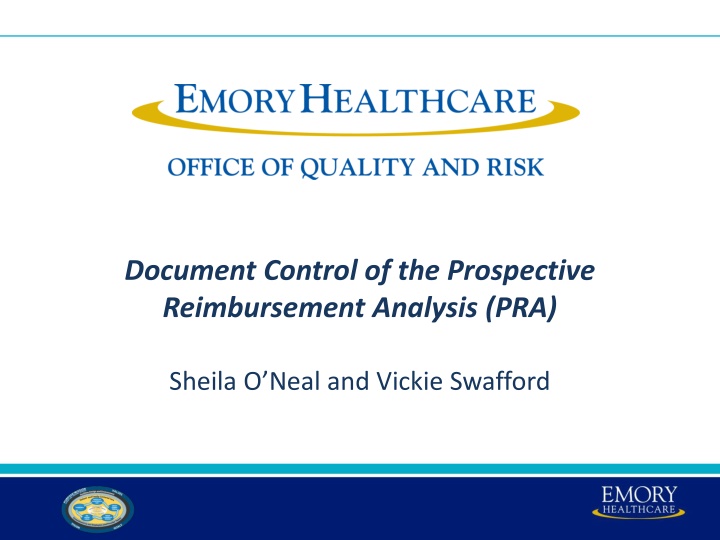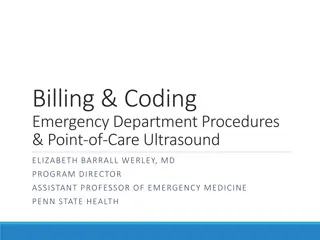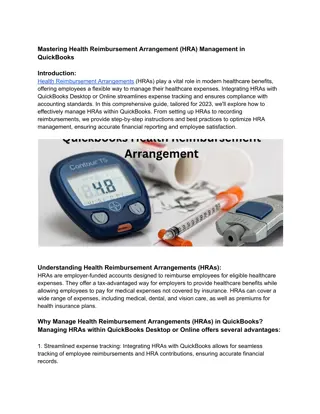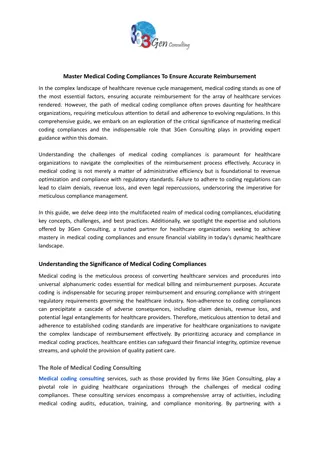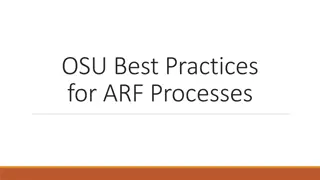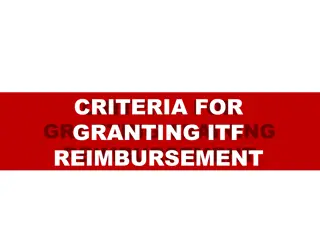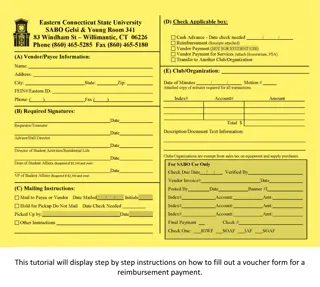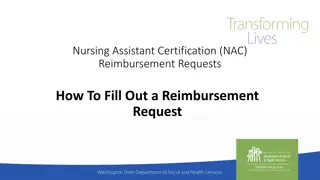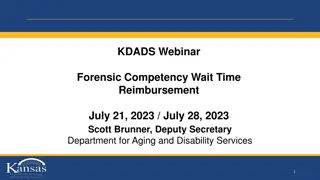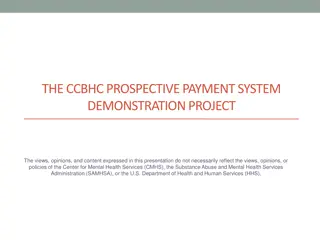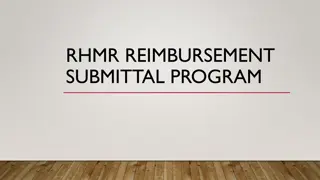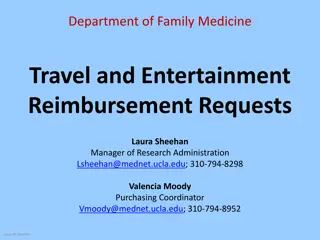Document Control of Prospective Reimbursement Analysis
The Office for Clinical Research oversees the Prospective Reimbursement Analysis (PRA) to ensure proper billing for clinical trial items/services. The PRA involves a thorough review of the protocol, budget, and informed consent document to determine billable items. The aim is to achieve over 90% accuracy in naming and storage of final PRAs by a specific date, improving efficiency and consistency within the OCR.
Download Presentation

Please find below an Image/Link to download the presentation.
The content on the website is provided AS IS for your information and personal use only. It may not be sold, licensed, or shared on other websites without obtaining consent from the author.If you encounter any issues during the download, it is possible that the publisher has removed the file from their server.
You are allowed to download the files provided on this website for personal or commercial use, subject to the condition that they are used lawfully. All files are the property of their respective owners.
The content on the website is provided AS IS for your information and personal use only. It may not be sold, licensed, or shared on other websites without obtaining consent from the author.
E N D
Presentation Transcript
Document Control of the Prospective Reimbursement Analysis (PRA) Sheila O Neal and Vickie Swafford
Background Office for Clinical Research (OCR): The OCR was established in 2001 as part of the implementation of the SOM's unfolding strategic plan for research. Addressing patient safety as it revolved around compliance. Per the Dean s Mandate of June 11, 2007 The School of Medicine instituted a mandatory policy whereby any new clinical trial or other research study that requires any intervention with a human subject involving drugs, devices, services or procedures must have a coverage analysis completed before it will be approved by the Office of Sponsored Programs (OSP). 3 3
Background The Prospective Reimbursement Analysis (PRA): The purpose of the PRA is to identify the appropriate payer for all items/services required in the clinical trial in order to ensure that charges are appropriately covered/allocated and prevent billing errors. Involves a thorough review of the protocol, draft Clinical Trial Agreement (CTA), draft budget, and draft informed consent document (ICD) in order to reach an objective determination regarding which items, services, etc. required of the protocol can and cannot be billed to third party payers using applicable Medicare guidelines. The PRA is part of the subjects medical record if they are a patient at Emory Healthcare. 4 4
Aim Statement We will show a >90% accuracy of naming of the final PRA and how it is stored in the OCR share drive by May 3, 2013. The Pre-Award Leads will develop a standard, consistent product Final PRA document with a focus on: Title (OCR ID), Footer (naming convention method), Protocol (version noted on the QCT page) and Folder storage (both the PRA sub- folder and Completed sub-folder) for use in OCR between Pre-Award and Data Integrity teams. 5 5
Initial Data 90 84 80 78 70 60 50 Starting Data% 40 30 24 20 19 10 0 PRA Title Name Footer Accuracy QCT Page : Version Completed Folder
After reviewing the data we were thinking what did we step into . 7 7
Tests of Change #1 Test of Change What was learned? Met with the Leads who perform the PRA to discuss process & project. Review of Process. Fishbone Diagram was created. Agreements on definitions and standards of process were reached going forward there would be a new process. Created and provided a detailed set of instructions. No standard process. 8 8
PRA Project Definitions PRA Project Definition Criteria IRB#, the year, and acronym Example #1: IRB00012345-13-TESTPRA Example #2: IRB00012345-13-TESTPRA Amendment 2; April 13, 2012 Example #3: IRB00012345-13-TESTPRA Revised March 15, 2013 OCR ID = IRB#-YR-ACRONYM; consist with original, amendment and revised Title Name OCR ID_FINAL_PRA_mm.dd.yr (example original) OCR ID_FINAL_PRA_Am1_mm.dd.yr (example amendments) OCR ID_FINAL_PRA_V.12.5_mm.dd.yr (example of versions) OCR ID_FINAL_PRA_Rev_mm.dd.yr (example revision) Footer File Name date=LAST CHANGED DATE Use terminology dictated by the sponsor protocol - identical to how it is written on protocol. Example #1: 28 February 2013 Example #2: March 5, 2013 Example #3: 04/15/2013 Example #4: (PI written no date - use E-Date received in OCR log) Finalized PRAs: one Excel and one PDF version should be saved in the COMPLETED folder (original or amendment folder) Use current Protocol version date that is being used to generate the PRA; list all versions/amendments used to change PRA Protocol Version Completed folder for the current project (i.e. original or amendment, etc.); revisions of PRAs should be stored here too. PRA Storage 9 9
PRA Title Template 10 10
Footer Template 11 11
12 12
Test of Change #2 Test of Change What was learned? Met to review data and agreed standard process. Individual results given. Discussed why errors still occurring and options considered, but no changes to process agreed to at this time. Gave individual results so that each could see where their errors occurred Impressed how important this was down stream to patient safety. The 1St weeks results showed almost 90% accuracy on each element, however subsequent weeks continued to decline. 13 13
Week 3 Data Sharp Decline in Accuracy PRA Title Name Footer Accuracy 100 110 100 87.5 90 87.5 80 90 80 80 70 78 67 60 60 50 50 40 40 30 20 24 20 10 0 Start Week 1 Week 2 Week 3 0 Start Week 1 Week 2 Week 3 QCT Page : Version Completed Folder 90 110 100 80 80 100 84 87.5 70 90 75 84 60 80 70 84 50 60 40 50 30 40 20 30 19 20 10 10 0 0 Start Week 1 Week 2 Week 3 Start Week 1 Week 2 Week 3 14 14
Test of Change #3 Test of Change What was learned? Met week 8 to review progress and continued errors. Discussed why errors still occurring. List of error provided to each lead and expectation laid out that corrections would be made and reviewed. Items were placed on the Check list and to be reviewed prior to hand off to SPA. An additional level of QA was set up to be reviewed by SPA when handed off. Learned there are more scenarios to consider that may not fit the current standards set causing indecision and errors on the report. Some Leads dismayed and concerned - feeling their finished products were correct every time. Learned we did not have to be so precise on some of the guidelines (i.e. all CAPS vs. not) ** We discovered that we as the QA Team did not initially require the Leads to correct the identified with errors, however the data was provided to the individual leads on which errors were found on specific PRAs. 15 15
PRA Title Name PRA Title Name 110 92 100 100 100 90 87.5 90 80 90 78 71 70 67 78 60 50 PRA Title Name 40 30 20 10 0 16 16
Footer Accuracy Footer Accuracy 100 100 83 90 87.5 78 80 71 80 69 70 60 50 Footer Accuracy 50 50 40 30 24 20 10 0 Start Week 1 Week 2 Week 3 Week 4 Week 5 Week 6 Week 7 Week 8 Week 9 17 17
QCT Page: Protocol Date QCT Page : Version 110 100 100 92 90 80 80 78 84 71 70 70 67 75 60 QCT Page : Version 50 40 30 20 19 10 0 Start Week 1 Week 2 Week 3 Week 4 Week 5 Week 6 Week 7 Week 8 Week 9 18 18
Completed Folder Completed Folder 110 100 100 100 100 100 92 100 87.5 90 84 80 84 71 70 60 50 Completed Folder 40 30 20 10 0 Start Week 1 Week 2 Week 3 Week 4 Week 5 Week 6 Week 7 Week 8 Week 9 19 19
Electronic Medical Record Documentation of Clinical Research Your patient s banner will appear with an On-Clinical Trial notification if entered in ERMS. Patient s name 20
Barriers Barriers Encountered How Overcome Personality Differences How to get their buy-in Explained how it affects the down stream process in regards to patient safety Didn t understand why important Provided verbal instructions along with printed guidelines, screen shots, template examples and lastly updated our checklist to include this process Different learning styles and unanticipated confusion of the process Not all protocols use the same date format Accepted the date Lead uses regardless of format on protocol 21 21
Next Steps Set QA steps in process for monthly review to continue to ensure quality and sustain results. Involve Sr. Program Associate to review before final hand off to Data Integrity Team. 22 22
Conclusion FINALLY THE LIGHT AT THE END OF THE TUNNEL 23 23
